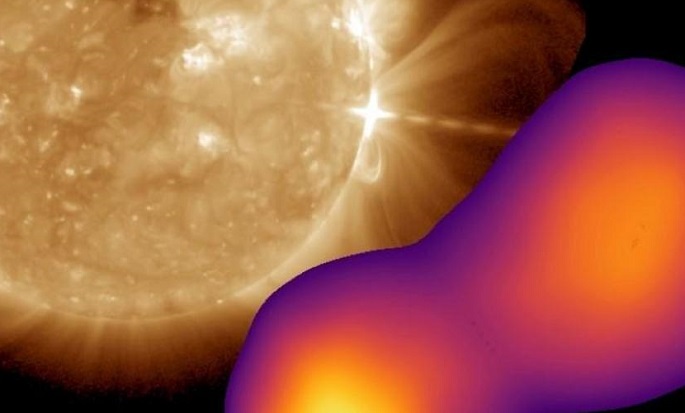Solar storms hasten particles simultaneously in many places
Published : 20 Feb 2019, 04:49
An international team of scientists led by a researcher from Trinity College Dublin and University of Helsinki announced a major discovery on the very nature of solar storms in the journal Nature Astronomy.
The team showed that solar storms can accelerate particles simultaneously in several locations by combining data from the Low Frequency Array, LOFAR, with images from NASA, NOAA and ESA spacecraft, said a press release issued by University of Helsinki.
The Sun is the closest star to our planet in the Universe, and like many stars, it is far from quiet. Sunspots, many times the size of Earth, can appear on its surface and store enormous reservoirs of energy. And it is within these regions that huge explosions called solar storms occur. Solar storms are spectacular eruptions of billions of tonnes of hot gas travelling at millions of kilometres an hour. The Nature paper studied a particularly large solar storm on September 10, 2017, soon after the LOFAR station in Ireland had been turned on.
“Our results are very exciting as they give us an amazingly detailed insight into how solar storms propagate away from the Sun and where they accelerate fast particles with speeds close to the speed of light”, said Diana Morosan, the lead author on the publication, and affiliated with Trinity College Dublin and the University of Helsinki.
These results may in the future help to produce more accurate forecasts of when solar radio bursts occur and how the solar storm impacts the Earth.
If they impact the Earth, they can produce beautiful displays of the aurora, but they can also cause problems with communication and navigation systems and power grids. Our society is now even more dependent on technology, and solar storms have the potential to cause significant effect on their performance.
“We used data from the Low Frequency Array, LOFAR, together with images from NASA, NOAA and ESA spacecraft to show where solar storms accelerate fast particles”, said Morosan.


